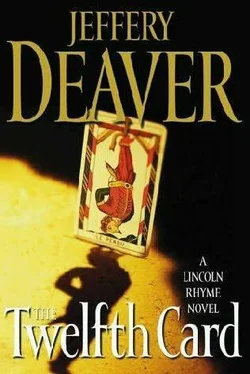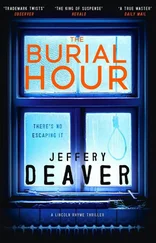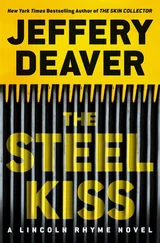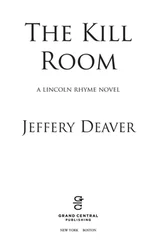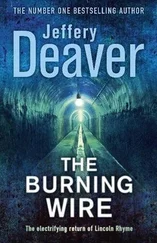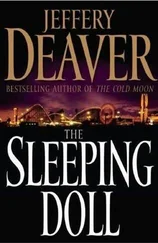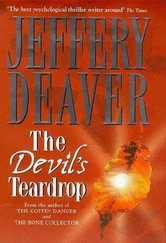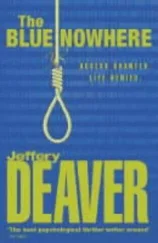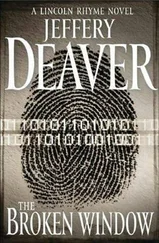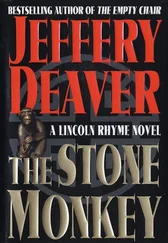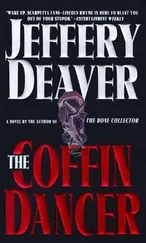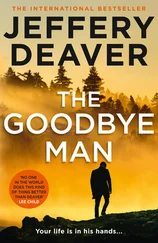The criminalist was shaking his head in frustration when his phone rang. “Rhyme here.”
“Lincoln, it’s Parker.”
The handwriting expert analyzing the note from Boyd’s safe house. Parker Kincaid and Rhyme traded newsbites about health and family. Rhyme learned that Kincaid’s live-in partner, FBI agent Margaret Lukas, was fine, as were Parker’s children, Stephie and Robby.
Sachs sent her greetings and then Kincaid got down to business. “I’ve been working on your letter nonstop since you sent me the scan. I’ve got a profile of the writer.”
Serious handwriting analysis never seeks to determine personality from the way people form their letters; handwriting itself is relevant only when comparing one document with another, say, when determining forgeries. But that didn’t interest Rhyme at the moment. No, what Parker Kincaid was talking about was deducing characteristics of the writer based on the language he used – the “unusual” phrasing that Rhyme had noted earlier. This could be extremely helpful in identifying suspects. Grammatical and syntactical analysis of the Lindbergh baby ransom note, for instance, gave a perfect profile of the kidnapper, Bruno Hauptmann.
With the enthusiasm he typically felt for his craft, Kincaid continued, “I found some interesting things. You’ve got the note handy?”
“It’s right in front of us.”
A black girl, fifth floor in this window, 2 October, about 0830. She saw my delivery van when he was parked in an alley behind the Jewelry exchange. Saw enough to guess the plans of mine. Kill her.
Kincaid said, “To start with, he’s foreign born. The awkward syntax and the misspellings tell me that. So does the way he indicates the date – putting the day before the month. And the time is given in the twenty-four-hour clock. That’s rare in America.”
The handwriting expert continued, “Now, another important point: he -”
“Or she ,” Rhyme interrupted.
“I’m leaning toward male,” Kincaid countered. “Tell you why in a minute. He uses the gendered pronoun ‘he,’ referring, it seems, to his van. That’s typical of several different foreign languages. But what really narrows it down is the two-member nominal phrase in the genitive construction.”
“The what? ” Rhyme asked.
“The genitive construction – a way to create the possessive. Your unsub wrote ‘my delivery van’ at one point.”
Rhyme scanned the note. “Got it.”
“But later he wrote ‘plans of mine.’ That makes me think your boy’s first language is Arabic.”
“Arabic?”
“I’ll say it’s a ninety percent likelihood. There’s a genitive construction in Arabic called i.daafah . The possessive’s usually formed by saying, ‘The car John.’ Meaning, ‘The car of John.’ Or, in your note, the ‘plans of mine.’ But the rules of Arabic grammar require that only one word is used for the thing that’s possessed – the ‘delivery van’ won’t work in Arabic; it’s a two-word phrase, so he can’t use i.daafah . He simply says ‘my delivery van.’ The other clue is the misuse of the indefinite article ‘a’ in ‘a alley.’ That’s common among Arabic speakers; the language doesn’t use indefinite articles, only the definite ‘the.’” Kincaid added, “That’s true of Welsh, too, but I don’t think this guy’s from Cardiff.”
“Good, Parker,” Sachs said. “Very subtle, but good.”
A faint laugh came from the speakerphone. “I’ll tell you, Amelia, everybody in the business’s been doing a lot of boning up on Arabic in the last few years.”
“That’s why you think it’s a man.”
“How many women Arab perps you see?”
“Not many…Anything else?”
“Get me some more samples and I’ll compare them if you want.”
“We may take you up on that.” Rhyme thanked Kincaid and they disconnected the call. Rhyme shook his head, staring at the evidence boards. He gave a scoffing laugh.
“What’re you thinking, Rhyme?”
“You know what he’s up to, don’t you?” the criminalist asked in an ominous voice.
Sachs nodded. “He’s not going to rob the exchange. He’s going to blow it up.”
“Yep.”
Dellray said, “Sure – those reports we’ve had, about terrorists goin’ after Israeli targets in the area.”
Sachs said, “The guard across the street from the museum said they get shipments of jewelry every day from Jerusalem… Okay, I’ll get the exchange evacuated and swept.” She pulled out her cell phone.
Rhyme glanced at the evidence board and said to Sellitto and Cooper, “Falafel and yogurt…and a delivery van. Find out if there are any restaurants around the exchange that serve Middle Eastern food and, if so, who makes deliveries and when. And what kind of van they use.”
Dellray shook his head. “Half the city eats that stuff. You can get gyros and falafel on every street corner in the city. They…” The agent stopped talking as his eyes met Rhyme’s.
“Pushcarts!”
Sellitto said, “There were a half dozen of them around the museum yesterday.”
“ Perfect for surveillance,” Rhyme snapped. “And what a cover. He delivers supplies to them every day, so nobody pays attention to him. I want to know who supplies the street vendors. Move!”
According to the board of health, only two companies delivered Middle Eastern food to the pushcarts in the blocks around the jewelry exchange. Ironically, the largest of them was owned by two Jewish brothers with family in Israel and who were active in their temple; they were hardly suspects.
The other company didn’t own the carts but sold gyros, kabobs and falafel, along with the condiments and sodas (as well as the heathen but ever-profitable pork hot dogs), to dozens of carts in Midtown. The operation was based out of a restaurant/deli down on Broad Street, whose owners hired a man to make the deliveries around town.
With Dellray and a dozen other agents and cops surrounding them, these owners became extremely – almost tearfully – cooperative. The name of their deliveryman was Bani al-Dahab, and he was a Saudi national, here on a visa long expired. He’d been a professional of some sort in Jeddah and had worked as an engineer for a time in the U.S. but after he went illegal he’d taken what work he could – cooking occasionally and delivering food to pushcarts and other Middle Eastern restaurants around Manhattan and Brooklyn.
The jewelry exchange had been evacuated and swept – no devices were found there – and an emergency vehicle locator was out on al-Dahab’s delivery van, which, according to the owners, might be anywhere in the city; the man was free to set his own delivery schedule.
It was at moments like this that Rhyme would have paced, had he been able to. Where the hell is he? Is the man driving around with a van full of explosives at the moment? Maybe he’d given up on the jewelry exchange and was going after a secondary target: a synagogue or an El-Al airlines office.
“Let’s get Boyd down here, put some pressure on him,” he snapped. “I want to know where the hell this guy is!”
It was at that moment that Mel Cooper’s phone rang.
Then Sellitto’s, followed by Amelia Sachs’s.
Finally, the main laboratory phone began to chirp.
The callers were different but the message was virtually the same.
Rhyme’s question about the bomber’s whereabouts had just been answered.
Only the driver died.
Which considering the force of the explosion and the fact that the van was in the intersection of Ninth Avenue and Fifty-fourth, surrounded by other cars, was pretty miraculous.
When the bomb went off, the direction of the blast was mostly upward, through the roof, and out the windows, scattering shrapnel and glass and injuring a score of people, but the main damage was confined to the interior of the E250. The burning van had lurched up on the sidewalk, where it slammed into a light post. A crew from the fire station up the street on Eighth Avenue got the flames out fast and kept the crowd back. As for the driver, there was no point in even trying to save him; the two largest pieces of his remains were separated by several yards.
Читать дальше
